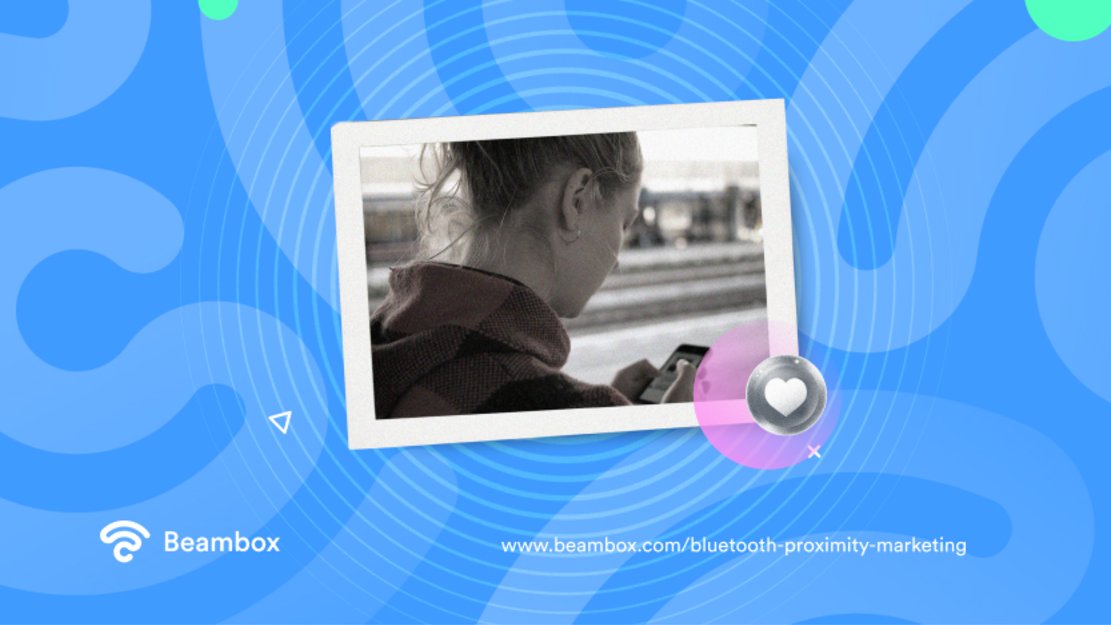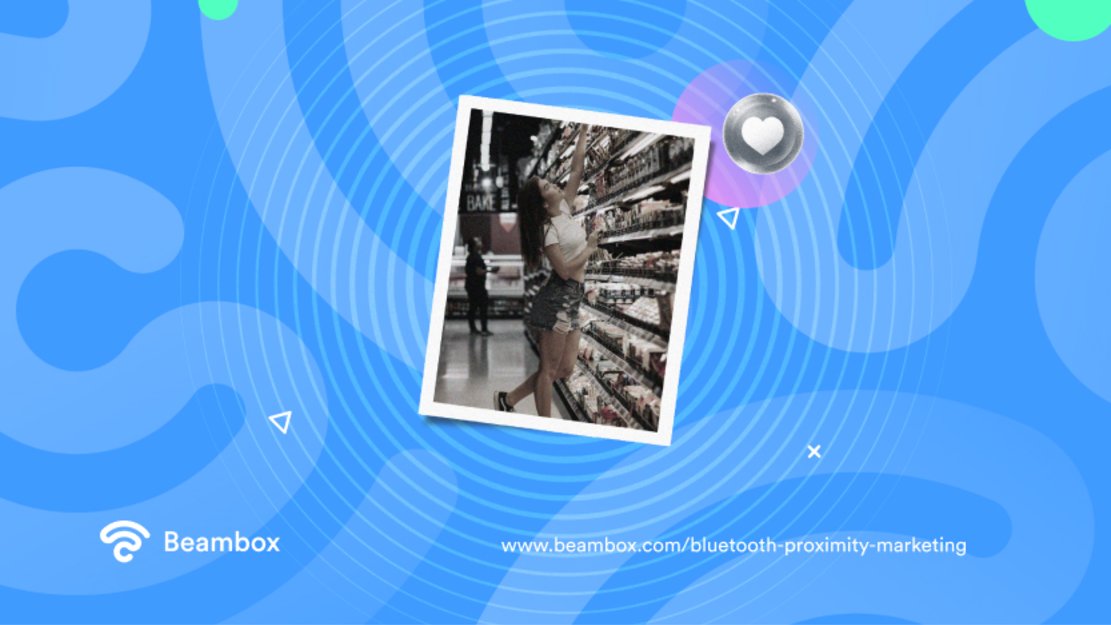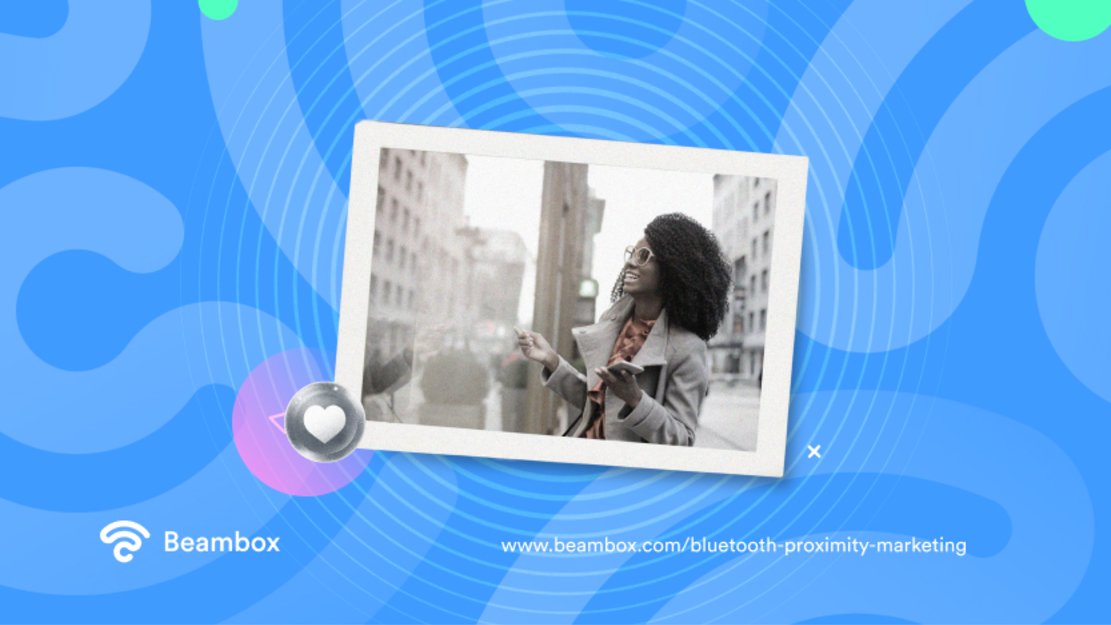It’s easy to confuse Bluetooth proximity marketing and location-based marketing since they work on the same principle.
But while both are based on location, there is an important difference. With the latter, you create ads that resonate with customers based on their location. However, that could be anywhere in the world. They could be on another continent, which would still be location-based marketing or geotargeting.
Proximity marketing also uses physical location, but it only works when customers are near your venue. In other words, it is a much more local type of geotargeting. Here, we’ll explore it in more detail to shape your strategy.

What Is Bluetooth Proximity Marketing?
Bluetooth proximity marketing uses Bluetooth beacons to send personalized promotions to customers near or inside a venue.
These small, portable devices constantly transmit signals that other devices can pick up. As the name suggests, these proximity marketing beacons use Bluetooth Low Energy (BLE) technology.
When a customer is nearby, their device can connect to the beacon. That creates a direct link between you and your customer, enabling you to make your marketing more effective.
For example, if the passerby is an existing customer, you can remind them about their last visit.
But Bluetooth signals have a limited range. You can only reach them if the customer’s device is near the beacon, hence the name proximity or hyperlocal marketing.
How Does a Bluetooth Proximity Marketing System Work?
Setting up a Bluetooth proximity marketing system is fairly simple and cost-effective. But you need to have three things for it to work.
First is the beacon technology. Second, you’ll need a mobile application to read your beacon’s signals. Finally, your customer needs to turn on the Bluetooth feature on their device and download the app. Here’s how it works:
- Installing the beacons: You’ll start by installing Bluetooth beacons in various places across your venue. The logical choice would be to install them in areas with much foot traffic. But you should also consider placing one or two in areas outside the venue to attract new customers.
- Detecting the signals: The installed beacon will constantly transmit Bluetooth signals with its unique ID. Once a device comes into proximity, the device’s beacon-sensing app will notify the beacon. These apps maintain a list of activated beacons and can match the IDs.
- Requesting connection: The beacon sends a push notification to the customer’s device, asking to establish a connection. Once the customer accepts, you can redirect them to your app or start promotion through messages.

3 Benefits of Beacon Bluetooth Marketing Every Business Should Know
Marketing trends come and go, but one thing remains consistent: the importance of providing a personalized experience. Creating a genuine connection is the best way to make a customer loyal to your business.
The fact that almost all mobile devices, even the most outdated ones, have Bluetooth can help you achieve this. Let’s discuss three of the key benefits of Beacon Bluetooth marketing.
The first and most obvious benefit of implementing a proximity marketing strategy is the ability to make immediate conversions. That’s the main goal of running your business, right?
With other types of marketing campaigns, the conversion might take time. For example, when you launch a social media campaign, there’s a chance people might scroll by without noticing.
But when they’re out shopping, they’re in the mindset of spending money. If so, the right message can bring an immediate conversion. Let’s say you own a restaurant, and the weather is particularly hot one day. Imagine the effect of sending potential customers nearby a discount coupon for your special summer drink.
However, you don’t always have to send discounts and deals to make the most of this in-store marketing technique.
Knowing your customer’s location and approaching them at the right time does most of the work. Even a friendly reminder can be enough to bring them on board.

2. Actionable Customer Insights
Knowing your customers at a granular level allows you to make better business decisions. If you don’t want to let any opportunity to get to know them slip by, proximity marketing is the answer. Here’s why.
You will probably have multiple beacons around your venue instead of just one or two.
When customers move around the place, their devices connect to the nearest one. As a result, you can track customer movement and create a map. Comparing maps of various customers, you can deduce a pattern.
In a supermarket, it might reveal a problem with the layout or arrangement. Bringing aisles with related items together will improve your customers’ shopping experience.
What’s more, you can see what items customers frequently buy together. Therefore, you can double down on what is performing best. Moreover, this will give you better information on your customer profile.
3. Bridge the Gap Between the Online and Offline
Lastly, Bluetooth proximity marketing helps you solve one of the most pressing problems: merging online and offline experiences.
Almost 75% of customers use their phones while shopping in a physical location. They might be comparing prices, viewing product information, or checking reviews online.
Here’s how Bluetooth proximity marketing can help you take advantage of these instances. Let’s say you own a gadget store, and a person is strolling through the laptop section. The beacon in that area allows you to pinpoint their location.
Sending them a link to your review page will make the decision process smoother for them. Positive reviews will act as a salesman without your employees having to do a thing. Plus, this personalized outreach will make them more loyal to your brand.

How To Choose Bluetooth Proximity Marketing Devices
If the current discussion piqued your interest in Bluetooth marketing, you’ll need to invest. But first, you should know how to choose the best Bluetooth proximity marketing devices for your needs.
The most important thing to look at is the transmission range. A device with a range of 300 meters is versatile and will cover almost any need.
Moreover, the battery life will also matter so you don’t run out of power during a campaign.
But, as you might expect, the greater the range and battery life, the more it will cost. So, also keep your budget in mind. Other things to check are the advertising intervals, protocols, and apps it supports. Your best bet is to research and then pick the option that best suits your needs.
Bluetooth proximity marketing is a cost-effective way to send highly relevant and timely promotions or informative messages to your customers. Right when they are in or near your business. Shopping malls, retailers, restaurants, and hotels are just a few examples of businesses using this technology.
However, it requires your customers to turn on their Bluetooth; not everyone is willing to do that.
Plus, you have to persuade them to download your app, which can be challenging. So, combining Bluetooth proximity marketing with other solutions like WiFi marketing, QR code marketing, and others is a better option.
To learn how to use your free guest WiFi as a powerful marketing tool, check out Beambox. This all-in-one solution lets you provide a personalized WiFi experience while capturing valuable customer data at the same time.
Do you want to see how it works? Start your 30-day free trial now!
Get Started With Free WiFi Marketing
Beambox helps businesses like yours grow with data capture, marketing automation and reputation management.
Sign up for 30 days free